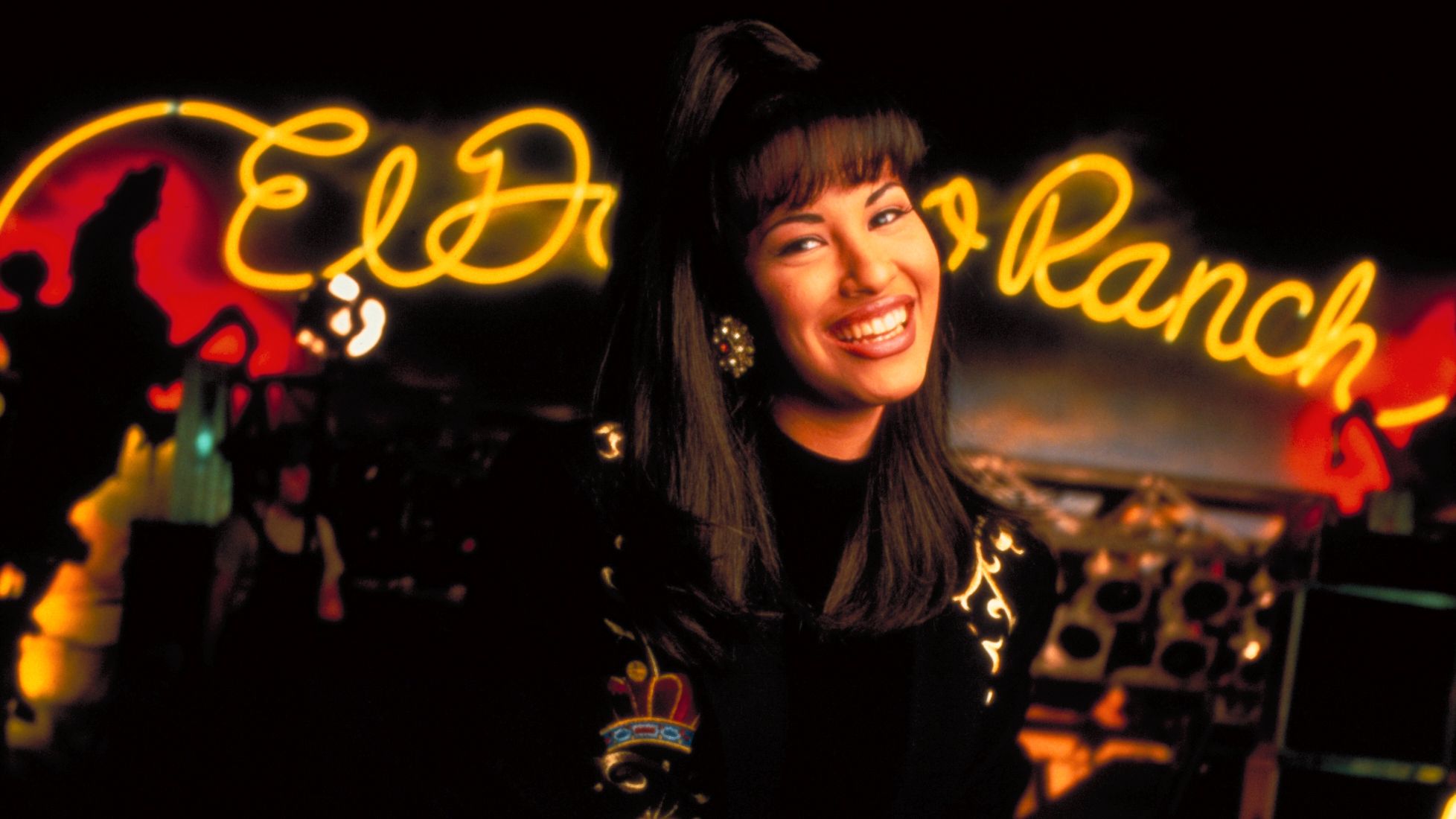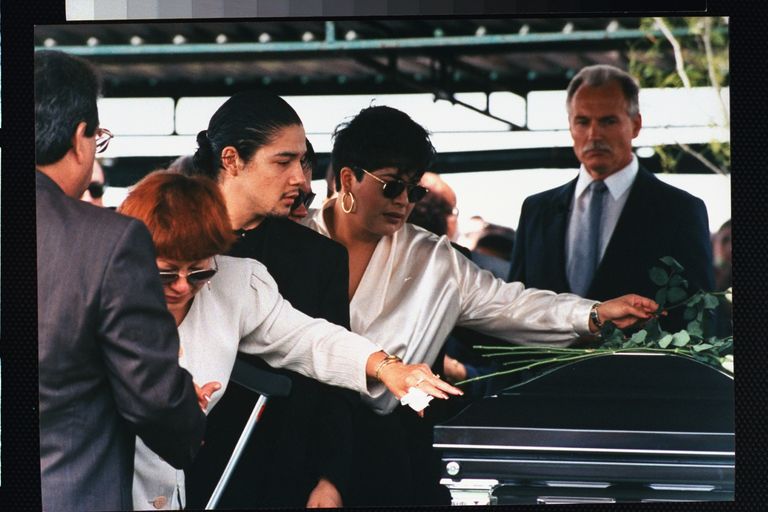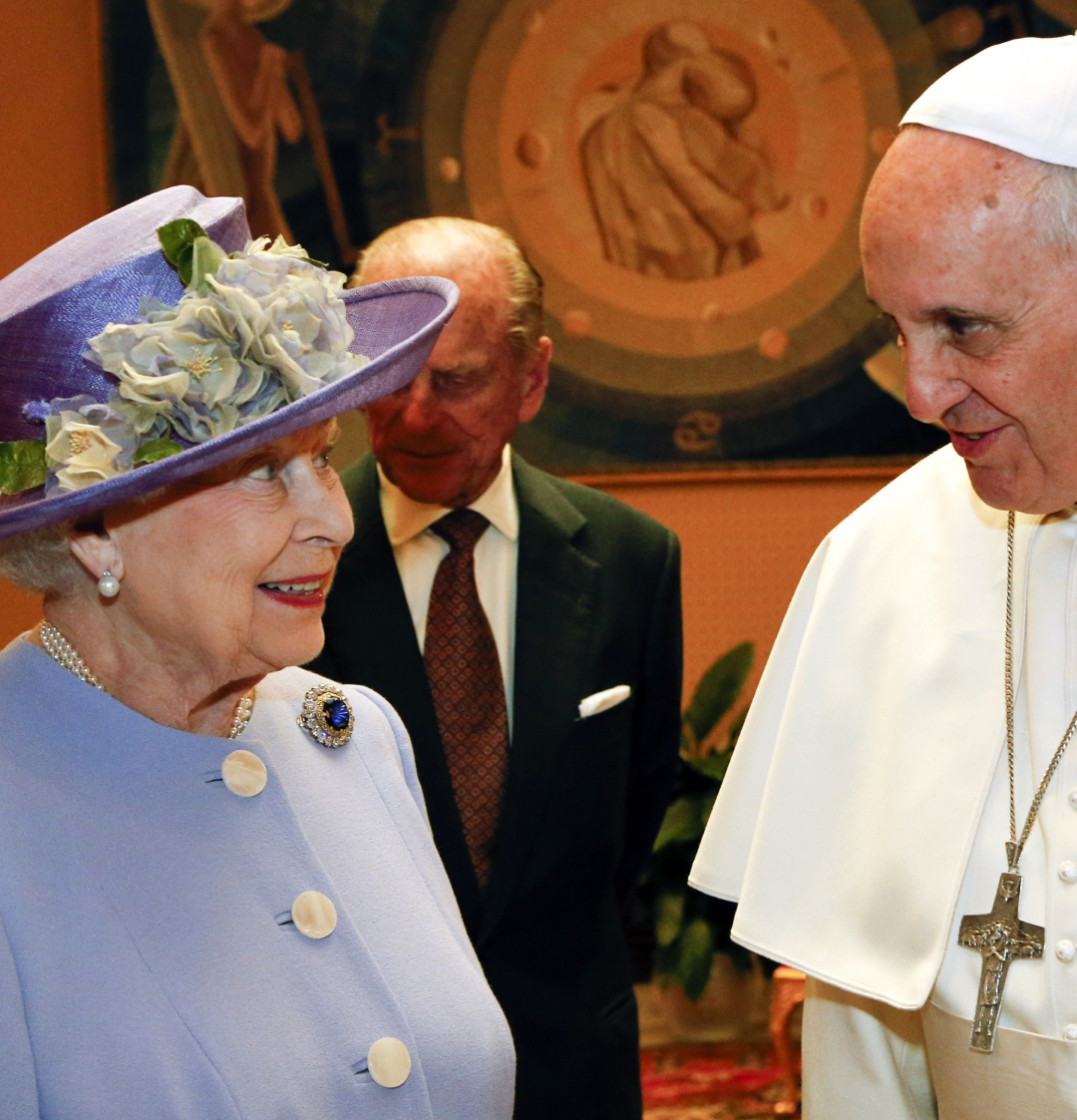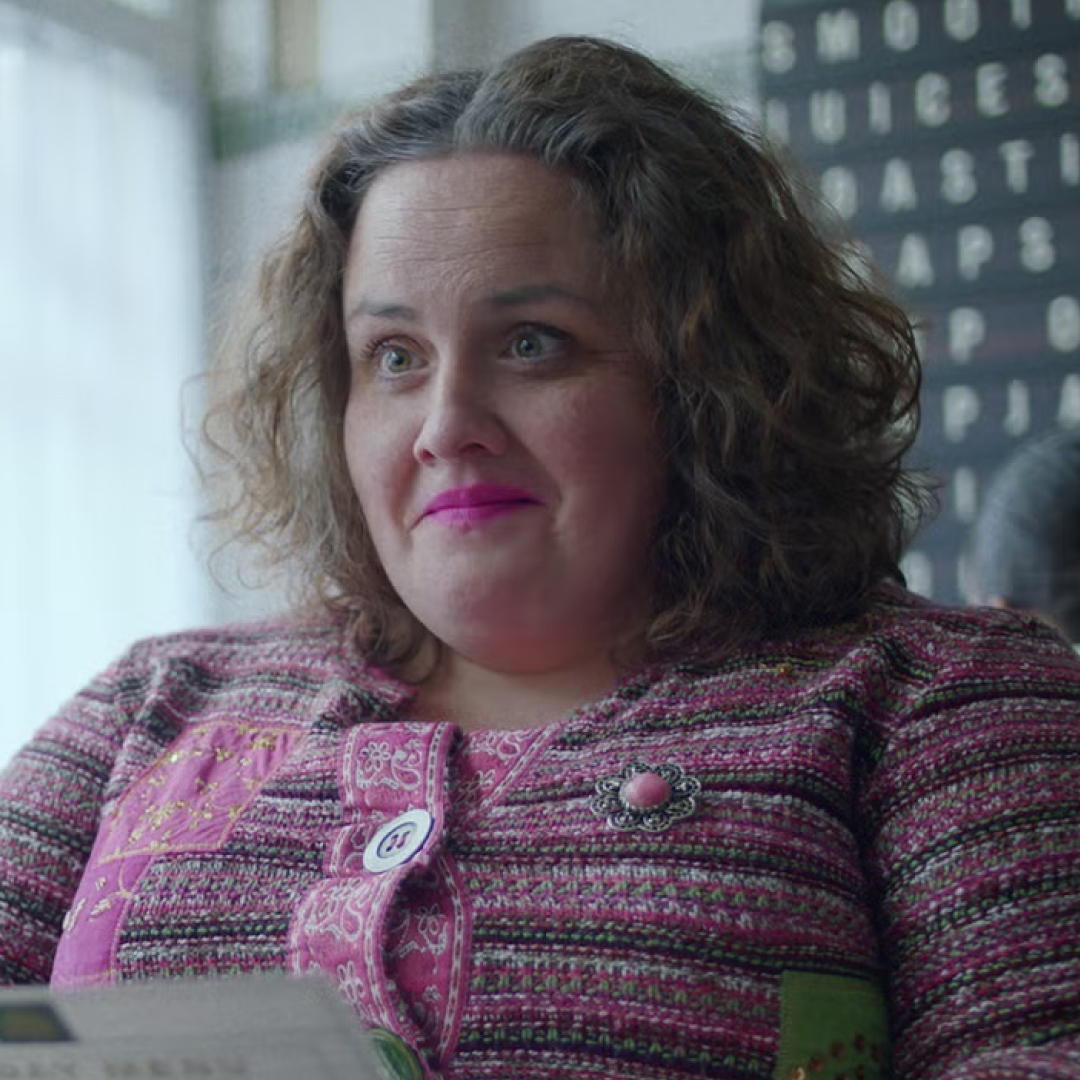The Tragic True Story of Selena Quintanilla's Death
The "Queen of Tejano music" was killed two weeks before her 24th birthday.


With the first part of Selena: The Series arriving on Netflix Dec. 4, not only will longtime fans of Selena Quintanilla-Pérez get their deepest dive yet into the acclaimed Tejano singer's life, but a whole new generation of soon-to-be Selena stans will also get to experience the magic of "Bidi Bidi Bom Bom," "Como la Flor," and all those rhinestone-encrusted bustiers and bra tops for the first time. Before we all dive headfirst into the show, starring Christian Serratos in the titular role, a quick recap of Selena's career highlights: She made history at the 1994 Grammys by becoming the first female Tejano artist to win Best Mexican/American Album, was the first Latin artist to have an album debut at #1 on the Billboard 200, and, with approximately 30 million records sold worldwide, is credited with bringing Tejano music into the mainstream.
Sadly, despite these and so many other massive successes throughout her short but groundbreaking solo career, the story of Selena's life is often overshadowed by that of her tragic death in 1995, when she was just 23 years old. Here's the full story of Selena's death, and its impact in the U.S. and around the world.
How did Selena die?
The Grammy winner was shot and killed by Yolanda Saldívar on March 31, 1995, barely two weeks before her 24th birthday. Saldívar was a close friend of Selena, and worked as both the creator and president of her fan club and the manager of her Selena Etc. boutiques in San Antonio and Corpus Christi, Texas. In the months leading up to Selena's death, however, her father Abraham Quintanilla Jr. received several complaints of Saldívar's poor management skills and failure to send fan club memorabilia to paying customers; he investigated the situation and discovered that Saldívar had embezzled more than $30,000 from the boutiques and fan club, per news reports from her murder trial.
Though Quintanilla Jr. confronted Saldívar and warned his daughter to cut off all ties with her, Selena was hesitant to do so. On March 31, Selena accompanied Saldívar to the Days Inn motel where she was staying in Corpus Christi. The singer reportedly asked Saldívar for financial statements or other evidence that would disprove the embezzlement claims, prompting Saldívar to take a handgun from her purse and shoot Selena in the shoulder. Though Selena was able to run to the motel lobby to cry for help, she quickly collapsed and was pronounced dead on arrival at Corpus Christi Memorial Hospital.
Meanwhile, Saldívar attempted to flee the crime scene, but soon found herself stuck in a nine-hour standoff with the police and FBI, during which she pointed the gun at herself and tearfully spoke on the phone with negotiators for several hours, according to reports. She was ultimately arrested, convicted, and, in October 1995, sentenced to life in prison with the possibility of parole after 30 years, in 2025.
What was the immediate aftermath of Selena's death?
Selena's funeral took place in Corpus Christi, her hometown, on April 3. The day before, an open-casket viewing attended by up to 40,000 fans was held at the Bayfront Auditorium, which has since been renamed Selena Auditorium. Her funeral was broadcast live on the radio, attended by approximately 600 guests, and held at Seaside Memorial Park.

Selena Quintanilla’s family attends her funeral in April 1995.
The tragedy was front-page news for days, and is credited with the creation of People en Español, Newsweek en Español, and Latina magazine after demonstrating to publishers the size of the Hispanic news market. Countless celebrities publicly paid their respects to Selena, with Gloria Estefan and Madonna reportedly among those who contacted the Quintanilla family directly to offer their condolences.
Stay In The Know
Get exclusive access to fashion and beauty trends, hot-off-the-press celebrity news, and more.
Additionally, shortly before what would have been Selena's 24th birthday, then-Gov. George W. Bush declared April 16 "Selena Day" in Texas. In 2019, local lawmakers filed legislation to make Selena Day an official state holiday, rather than just an honorary one.
How has Selena's legacy continued?
In the 25 years since Selena's death, her music has remained widely popular. In fact, upon the release of her crossover album Dreaming of You in July 1995, Selena became only the third woman to sell more than 300,000 copies of an album in its first week, following Janet Jackson and Mariah Carey. The album was also the first by a Hispanic artist to debut in the top spot on the Billboard 200 chart, and was the first posthumously released solo album to reach the milestone. In 2017, with nearly 3 million copies sold, Dreaming of You was found to be the best-selling Latin album of all time in the U.S.
Beyond the continued relevance of her music, the singer has been further immortalized in countless ways: with a 1997 biopic starring Jennifer Lopez, her 1995 induction into the Billboard Latin Music Hall of Fame, a 2005 tribute concert by her family and former band members, her 2017 addition to the Hollywood Walk of Fame—which had the largest audience of any other star-unveiling ceremony—and her commemorative MAC Cosmetics collection in 2016, which became the best-selling celebrity makeup line of all time, sparking the release of a follow-up collection this year, to name just a few.
And in her hometown, a life-size bronze sculpture of Selena named "Mirador de la Flor" was installed on the Corpus Christi Bayfront. The city also hosted the "Fiesta de la Flor" two-day festival in her honor every year between 2015 and 2020.
Andrea Park is a Chicago-based writer and reporter with a near-encyclopedic knowledge of the extended Kardashian-Jenner kingdom, early 2000s rom-coms and celebrity book club selections. She graduated from the Columbia School of Journalism in 2017 and has also written for W, Brides, Glamour, Women's Health, People and more.
-
 Fairy Tale Movies So Sweet and Fantastical You'll Forget About Reality for A Little While
Fairy Tale Movies So Sweet and Fantastical You'll Forget About Reality for A Little WhilePrincesses, mermaids, and true love's kiss, oh my!
By Katherine J. Igoe
-
 I Injected My Body's "Liquid Gold" to Address Undereye Fine Lines and Dark Circles
I Injected My Body's "Liquid Gold" to Address Undereye Fine Lines and Dark CirclesBut would I do it again?
By Michelle Rostamian
-
 Queen Elizabeth Gave the Perfect Response When Pope Francis Presented Her With Priceless Gifts for Prince George
Queen Elizabeth Gave the Perfect Response When Pope Francis Presented Her With Priceless Gifts for Prince GeorgeThe late pope spared no expense when it came to treating the infant prince in 2014.
By Kristin Contino
-
 Meet 'Selling the City' Star Jordyn Taylor Braff: What to Know About Her Career Trajectory and Dating History
Meet 'Selling the City' Star Jordyn Taylor Braff: What to Know About Her Career Trajectory and Dating HistoryShe even had a surprising career path before joining Douglas Elliman.
By Quinci LeGardye
-
 32 Celebrity Podcasts Worth Listening To
32 Celebrity Podcasts Worth Listening ToGrab some headphones and tune in.
By Katherine J. Igoe
-
 The 30 Celebrity Memoirs That Are Actually Worth Reading
The 30 Celebrity Memoirs That Are Actually Worth ReadingBritney Spears, Demi Moore, Jessica Simpson, and more drop some serious bombshells in these pages.
By Andrea Park
-
 How Victoria Justice Learned to Use Her Voice on the Set of 'Victorious'
How Victoria Justice Learned to Use Her Voice on the Set of 'Victorious'The former Nickelodeon star recalls what it was like to speak up to adults on set as a child.
By Sadie Bell
-
 Paul Mescal and Daisy Edgar-Jones Tease an Announcement: "We've Got Some News to Share"
Paul Mescal and Daisy Edgar-Jones Tease an Announcement: "We've Got Some News to Share"The former 'Normal People' costars and IRL best friends seem to have a new project in the works.
By Sadie Bell
-
 The Woman Who Inspired Martha in 'Baby Reindeer' Calls the Series "a Work of Fiction" In a YouTube Interview
The Woman Who Inspired Martha in 'Baby Reindeer' Calls the Series "a Work of Fiction" In a YouTube InterviewA woman has come forward as the alleged inspiration behind Martha in the hit Netflix series.
By Sadie Bell
-
 The Best 'Friends' Episodes of All Time
The Best 'Friends' Episodes of All TimeCould these BE any better?
By Katherine J. Igoe
-
 ‘Bachelor in Paradise’ 2023: Everything We Know
‘Bachelor in Paradise’ 2023: Everything We KnowCue up Mike Reno and Ann Wilson’s \201cAlmost Paradise."
By Andrea Park